Waldo Stadium
Introduction
Text-to-speech Audio
User Note: Follow the sidewalk back towards the Seelye Center until you reach another path that extends to the left. Follow that path towards the stadium and use the staircase on the left to get a better view.
As Western continued to grow, the expanding athletic departments needed adequate facilities to continue to represent the Normal School. President Waldo purchased the future site of the stadium in 1911 construction soon began on the new athletic field. The land underwent many changes, including the transition from a dirt field with a running track to a stadium outfitted with concessions, VIP suites, and a few thousand seats. Today, the stadium features an artificial turf field with concrete stands for over 30,000 spectators, as well as multiple amenities for visitors. The stadium was officially dedicated as a memorial to President Waldo and continues to serve as a reminder of his legacy at WMU.
See below for more information
Images
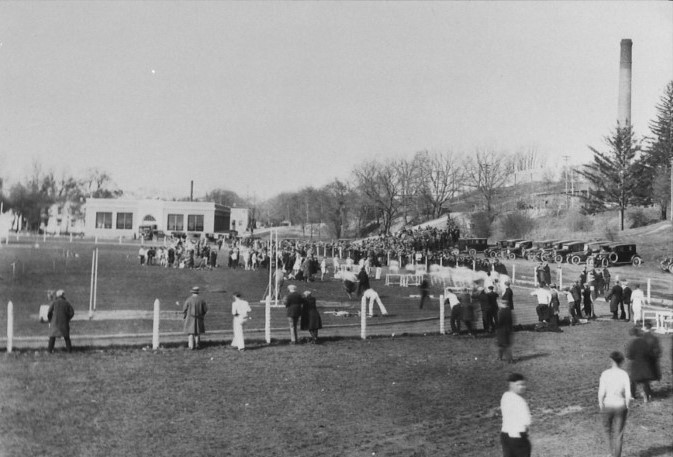
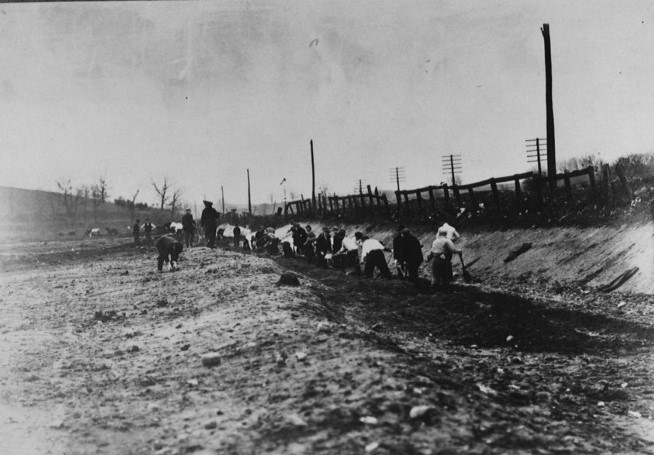
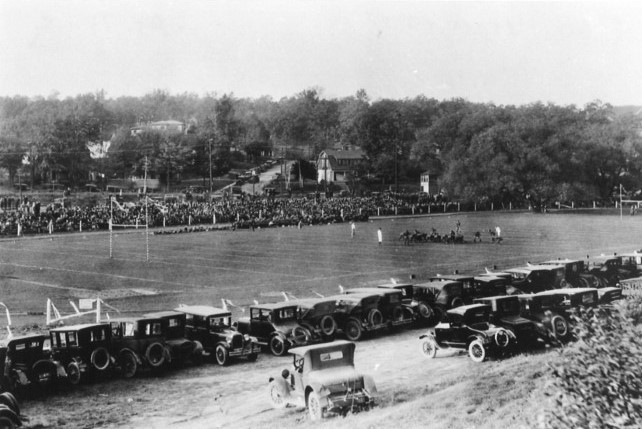
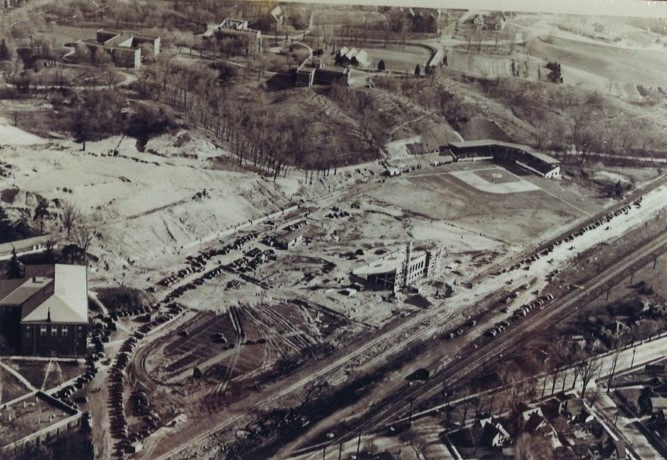
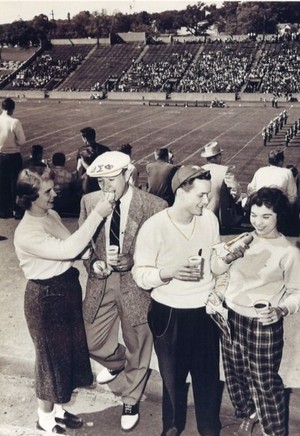
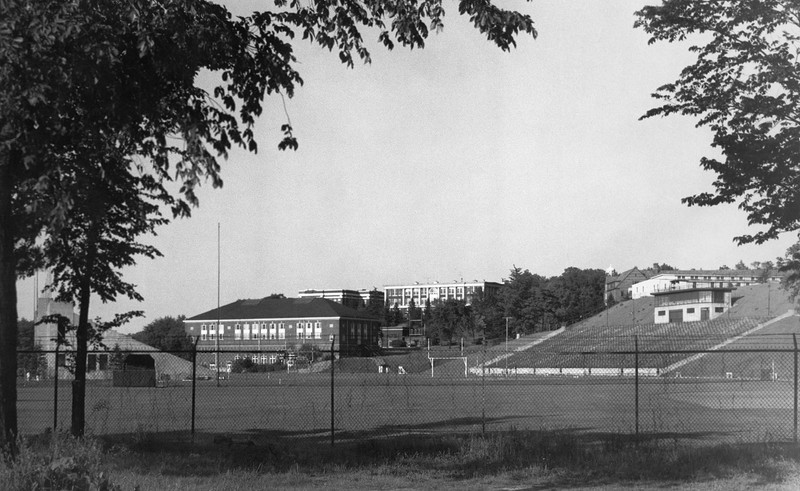
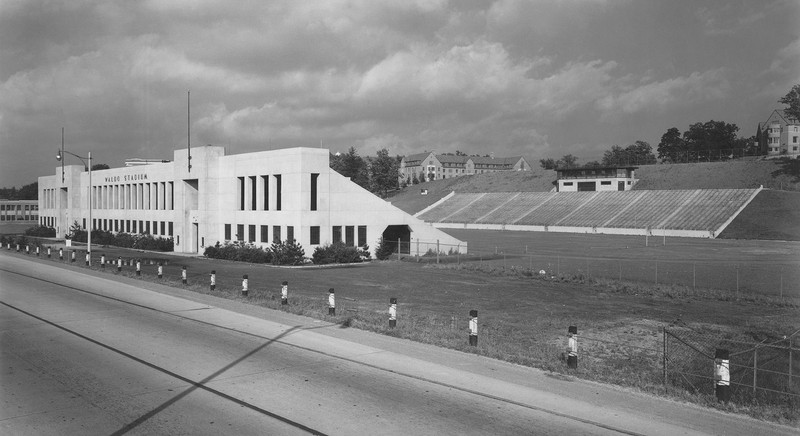
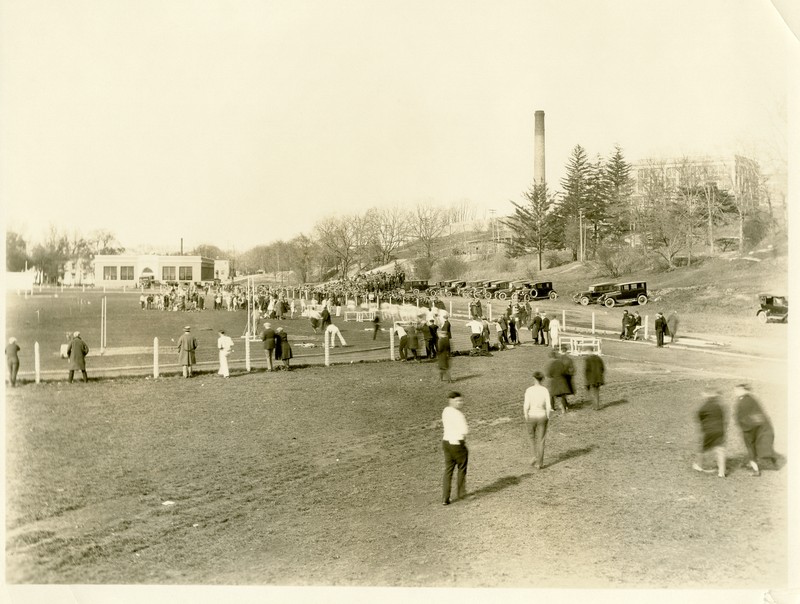
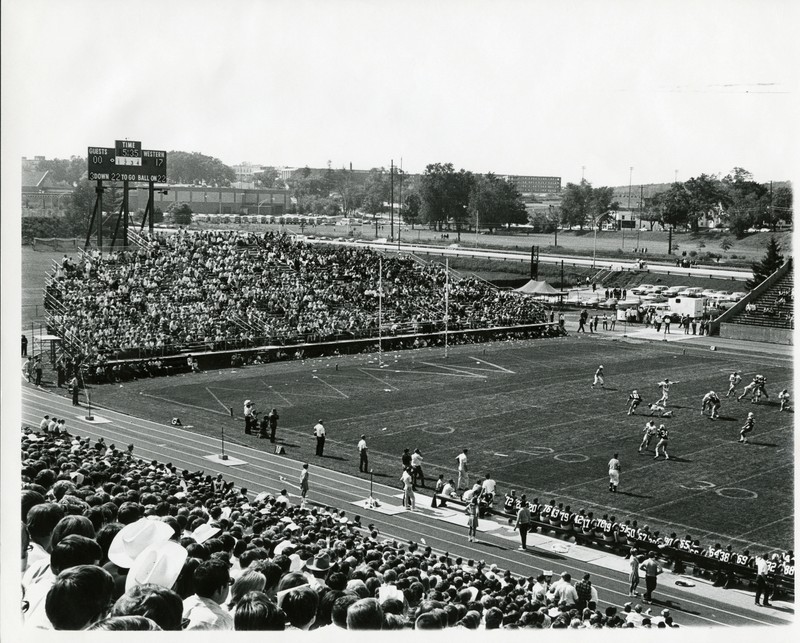
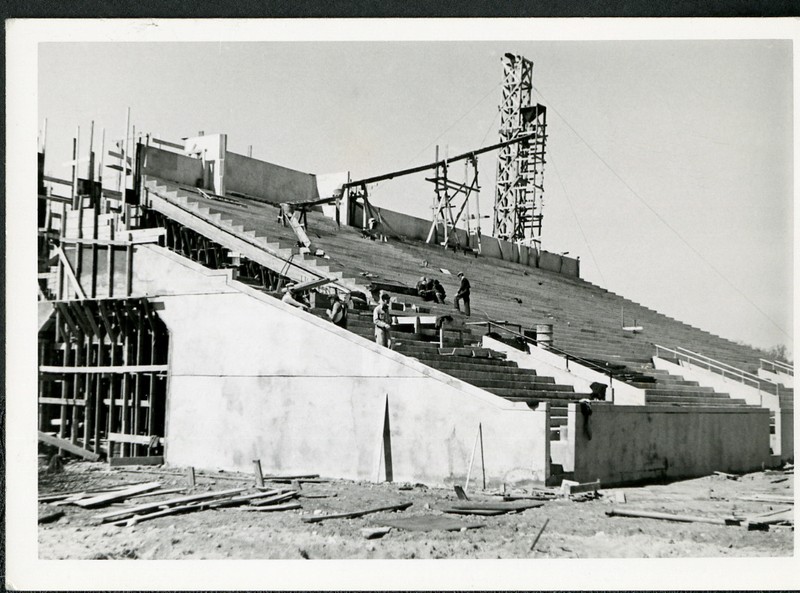
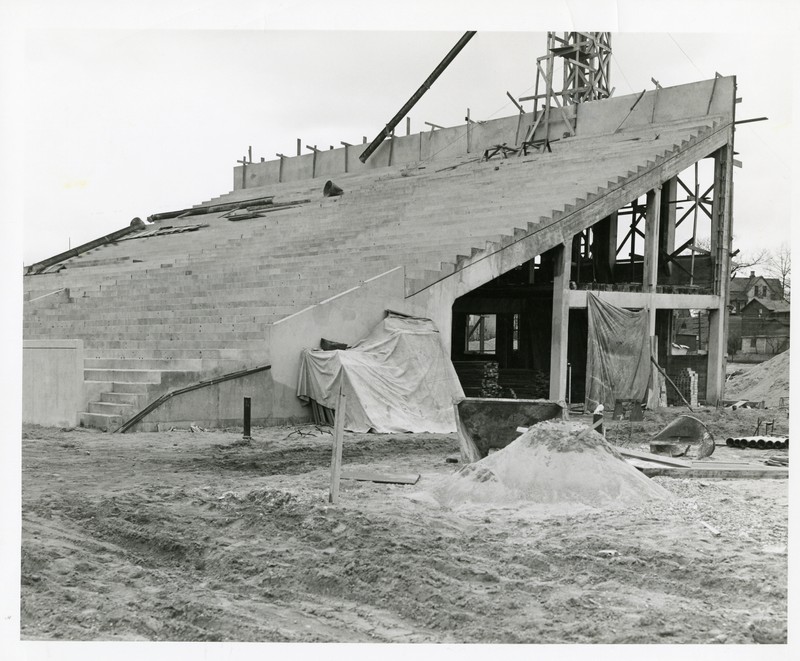
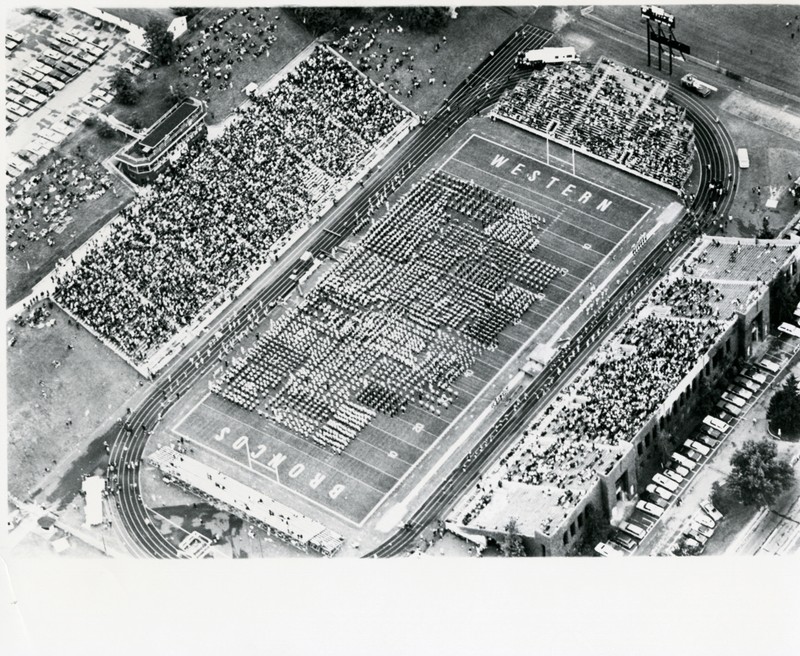
Backstory and Context
Text-to-speech Audio
In 1909, President Waldo had secured $50,000 to buy land for the future athletic fields but it was not enough to cover the costs. Over the next two years, Waldo searched and negotiated for space and soon purchased 14 acres of swamp just west of campus. Both students and faculty helped to rechannel Arcadia Creek, which ran through the field, and prepare the ground for the new athletic facilities.
Western’s first field consisted of a grassy space surrounded by a dirt running track, which lasted until 1936 when the official stadium was constructed. Fundraising campaigns were set up to help make the project debt-free upon completion, which included the selling of minted souvenir coins adorned with Waldo’s image and sending out wooden barrels that were to be filled with coins and sent back.
Once completed, the stadium included concrete stands that accommodated up to 15,000 people, 52 eight-person boxes, locker rooms, a press box, conference rooms, and concessions, and was officially dedicated on November 4, 1939.
Over the next several decades, the stadium underwent numerous renovations to keep up with the growing athletic department, which included the addition of more seating, artificial turf, new press boxes in honor of Western alumni, and the renovation of the front entrance. In addition, the stadium was equipped with new locker rooms, training facilities, offices for conferences and coaches, meeting rooms, and an auditorium.
In 1997, the stadium accommodated up to 30,200 spectators, which still remains true today. Waldo Stadium continues to serve as the official home for Western football and as a memory of President Waldo.
Sources
Massie, Larry B. Brown and Golden Memories: Western Michigan University's First Century. Kalamazoo, MI: Western Michigan University, 2003.
Knauss, James O. The First Fifty Years: A History of Western Michigan College of Education, 1903-1953. Kalamazoo, MI: Western Michigan College of Education, 1953.
“Waldo Stadium to Be Dedicated Here Tomorrow.” Kalamazoo Gazette, November 3, 1939.
University Libraries. Rep. Campus Building Inventory - Yearly Summary, n.d.
“$7 Million Addition.” Kalamazoo Gazette, July 16, 1997, sec. B1.
